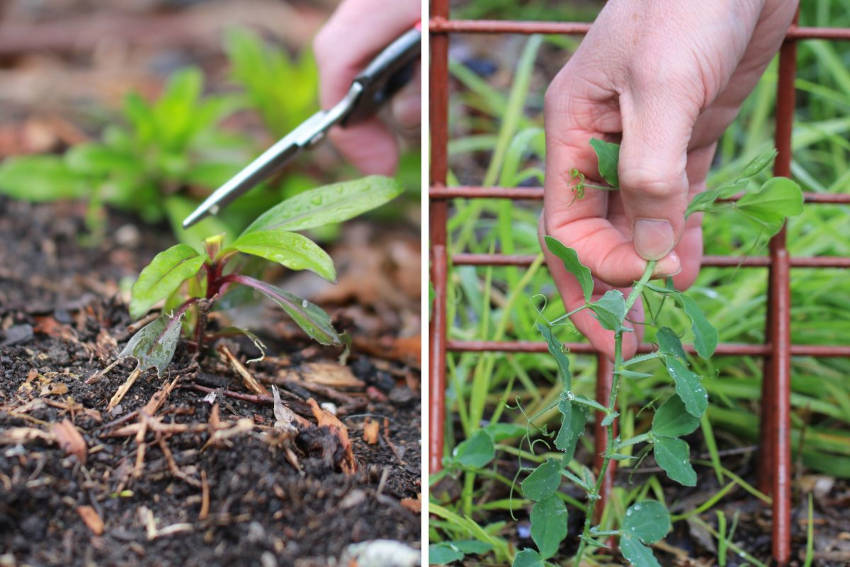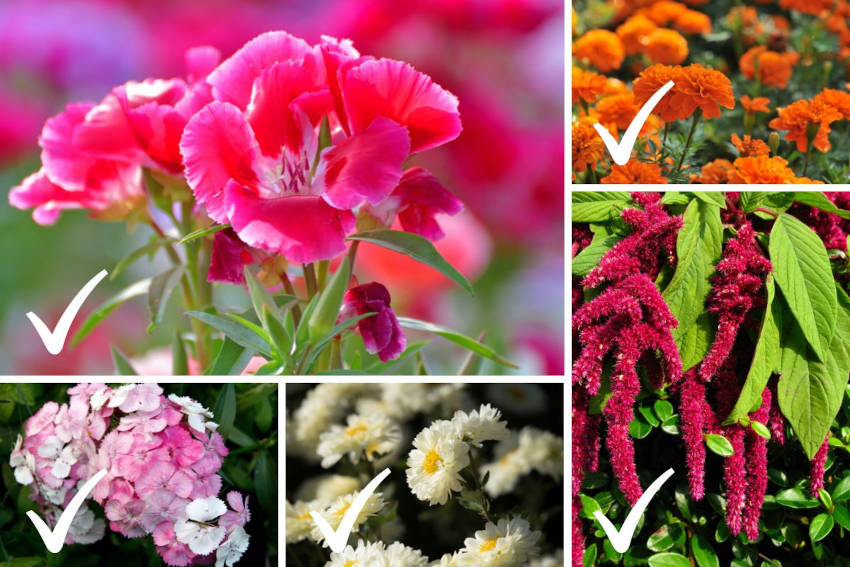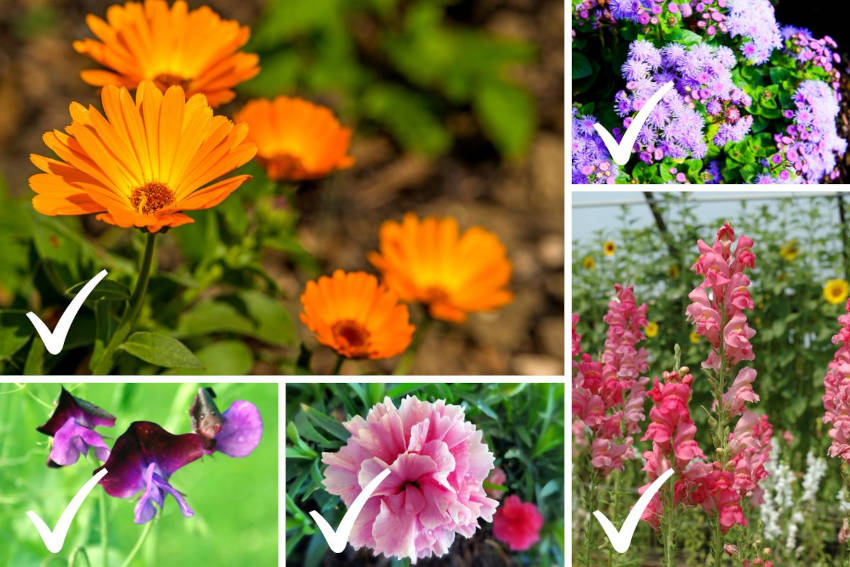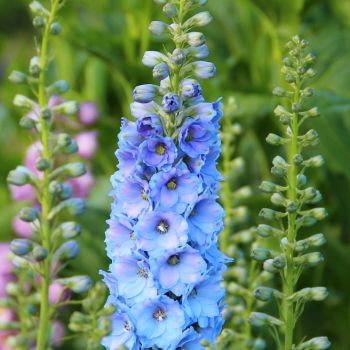One technique that professional flower farmers swear by is ‘pinching’ their plants. Pinching (also called ‘pinching out’) refers to the technique of pruning the main stem of a plant to encourage new branches to grow from lower down the stem. While it may feel counterintuitive to deliberately remove a large part of a healthy plant, pinching can result in both stronger plants and more flowers than if plants are left to grow unpruned.
Here’s what you need to know to pinch the flowering plants in your garden.
Why Pinch?
Removing the top of the main stem of the plant will encourage new growth in the form of side shoots. The new shoots will develop in the leaf axils, the area between the main stem and an existing leaf (if you grow tomatoes you'll be familiar with the shoots that grow vigorously from these areas). These shoots will develop into flowering branches; removing the single main stem will result in several new branches, each of which will produce flowers.
What’s more, each of the new branches will be stronger with a longer stem, making them more suitable for picking. Another advantage of pinching is that the plant’s overall growth is more shrubby and compact, meaning it will be less vulnerable to strong winds, in some cases making staking unnecessary.
What to Pinch
Any flowering annual with a branching habit can benefit from pinching, especially those classed as ‘cut and come again’ bloomers. Ageratum, carnation, calendula, chrysanthemum, godetia, marigold, snapdragon, sweetpea and sweet william can all benefit from pinching.
The technique is particularly beneficial for plants with very thick, strong stems such as dahlias and amaranth, because the side branches that grow following pinching are often easier to handle and use as cut flowers than the very chunky main growing stems.
Plants that bloom on a single stem should not be pinched. Single flowered sunflowers and cockscomb celosias, ornamental kale, stock and flowering bulbs such as daffodils and tulips should not be pinched.
When to Pinch
There’s no one-size-fits-all rule about when to pinch flowering plants, but it’s a good idea to do it before they develop their first buds. For most plants, this is when they are 20-40cm tall with at least 4 to 5 sets of true leaves.
If your plants have already formed flowers it’s still OK to pinch them, you’ll just lose a couple of buds or flowers in the process. Similarly, it’s fine to pinch out the plants if they’ve already started to form side branches or shoots.
How to Pinch
The pinching technique couldn’t be simpler - often the hardest part is taking the leap of faith that the process will result in stronger plants and more flowers.
Do your pinching on a dry, sunny day that’s not too hot or windy; this will increase the chances of the cuts you make healing over well and reduce stress on the plants while they recover. Using sharp, clean snips or secateurs, cut off the top 10cm or so of the main stem of the plant, making the cut just above a set of leaves. Discard the prunings in your compost or green bin.
That’s all there is to it! You should see new shoots emerge from in a few weeks.
While pinching your flowering plants may take courage, the rewards of more flowers, longer stems and stronger, more compact plants certainly make this technique worth a try in your garden.

A sweet william plant just tall enough to be pinched, and making the cut.

The plant after being pinched. You can also literally 'pinch' some plants, such as sweetpeas, using your hands.

Plants to pinch: godetia, marigold, amaranth, sweet william, chrysanthemum.

More plants to pinch: calendula, argeratum, snapdragon, carnation, sweetpea.

Do not pinch: ornamental kale, single stemmed celosia and sunflower, stock, flowering bulbs.





